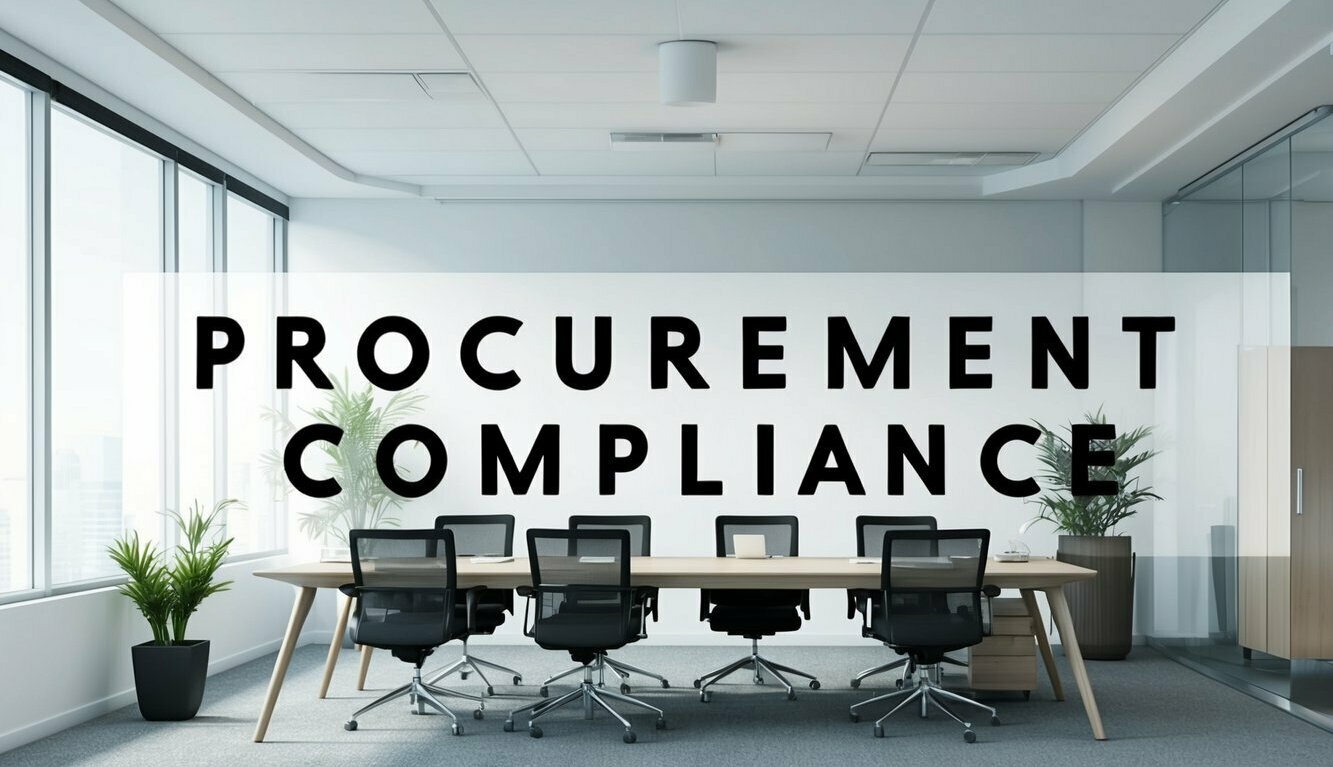From 1 January 2026, a new set of procurement thresholds will apply under the Procurement Act 2023. The changes may seem small, with most reducing by around 3%. In reality, they will decide which contracts become full tenders, which stay below threshold and how much visible public sector opportunity lands in front of you over the next two years.
If you’re looking to win work through public sector procurement, then you need to familiarise yourself with the new 2026/27 thresholds. They will influence your pipeline, competition levels, bid tactics and compliance risk for the next two years.
Procurement Thresholds 2026/27: Why They Matter
Thresholds are the trigger point for when a contract becomes a “public contract” and falls under the main Procurement Act 2023 regime. A contract is only a public contract if it is not exempt and its estimated value, including VAT, is at or above the relevant amount in Schedule 1 of the Act.
Go above a threshold and the award, entry into and management of that contract becomes covered procurement, with a full set of transparency, competition and remedy rules. Stay clearly below and a more flexible below-threshold regime applies.
The 2026/27 figures matter because:
- They determine which opportunities must be openly advertised.
- They drive when contracting authorities must use standard procedures rather than informal competitions.
- They shape how much of the overall spend you actually see as a supplier.
In short, the new procurement thresholds will determine what kind of contracts are available to you and how hard you will have to work to win it. The lower thresholds mean that competition is likely to be higher.
Ready for the changes?
Contact us for expert adviceHow the Procurement Thresholds Are Changing for 2026/27
Before planning for the future, it helps to see current and upcoming thresholds side by side. The figures below are all inclusive of VAT and show the shift from the 2024–2025 position to the new procurement thresholds that will apply commencing on or after 1 January 2026.
Contract type |
2024–25 threshold (incl. VAT) |
2026–27 threshold (incl. VAT) |
Central government supplies & services |
£139,688 |
£135,018 |
Sub-central supplies & services |
£214,904 |
£207,720 |
Utilities supplies & services |
£429,809 |
£415,440 |
Works contracts |
£5,372,609 |
£5,193,000 |
Concession contracts |
£5,372,609 |
£5,193,000 |
Light touch contracts |
£663,540 |
£663,540 |
For procurements that start on or before 31 December 2025, the 2024–25 thresholds continue to apply even if the award or contract signature happens in 2026. For procurements that commence on or after 1 January 2026, the new 2026–27 figures take over.
How the 2026 Thresholds Shape Your Route to Market
An above-threshold contract has to follow a full, structured procurement process, with advertised notices, clear rules and remedies if things go wrong. A below-threshold contract is more flexible, but it is not a free-for-all.
Cabinet Office guidance explains that regulated below-threshold contracts still carry duties on fairness and transparency. Buyers must publish certain notices on the central digital platform, avoid unnecessary pre-qualification and keep a defensible audit trail of how they chose a winner.
As thresholds drop in 2026:
- More contracts that would previously have been below threshold will move into that full, above-threshold process
- Fewer local or informal competitions will run entirely “off platform”
- You are likely to see more standardised documentation and evaluation models, even for modest contract values
All of this fits into the wider impact of the Procurement Act 2023 on how public buyers shape markets, encourage SME participation and push policy outcomes through their supply chains.

Getting Valuation Right Under the New Procurement Thresholds
Whether a contract falls above or below the new thresholds is driven by one question: what is the true value of the contract?
The rules require contracting authorities to estimate the maximum value they might pay. That means looking at:
- the base contract value
- all likely options and extensions
- any linked or bundled services
- any non-cash consideration
- VAT on top
This total figure is then compared with the relevant threshold to decide which regime applies.
The guidance is clear that authorities cannot work backwards from the threshold. They must not understate demand, ignore options or split a requirement into smaller pieces just to keep each part below the limit.
For suppliers, this raises some practical issues:
- Bundled scopes: if a buyer pulls several services or locations into one competition, the total value may move the requirement above threshold.
- Long-term frameworks: four-year or open frameworks may cross the threshold once realistic call-off volumes are included.
- Growth and options: contracts that look modest at day one might exceed thresholds once growth, indexation and optional phases are factored in.
Authorities that want to demonstrate compliance and value for money in procurement will need robust, documented valuation methods that can withstand audit or challenge.
These thresholds also matter when contracts change. Significant contract variations can push a deal into a different regime or alter whether a modification is permissible without re-tendering. Suppliers should be alive to this in negotiation, particularly on longer term, high value arrangements.
What the New Thresholds Mean for Your Pipeline
The downward adjustment in procurement thresholds 2026 creates both risk and opportunity.
Opportunities
- More tenders should be visible on the central digital platform as covered procurements
- Contracts just above the new thresholds may attract fewer speculative bidders, because the bid cost is higher
- Re-bundled or re-competed frameworks can create new entry points where incumbents have previously dominated
Risks
- You can expect more formal, larger competitions and fewer small, direct awards
- Requirements are likely to become more structured, with clearly defined evaluation models
- Any weaknesses in your governance, policy alignment or ESG story will be more exposed in scored submissions
The thresholds give you a useful planning tool.
Look at your historic wins and ask: at what contract values do you perform best? Once you know that “sweet spot”, you can target the above-threshold notices where you are most likely to score well and stop chasing low-value, low-margin work.

Staying Competitive and Compliant
As thresholds come down, buyers are likely to be more cautious. They will want to show that they have followed the rules, published the right notices and treated bidders consistently.
For suppliers, that means:
- Being ready to evidence statutory and policy compliance quickly, from Net Zero and social value through to data protection and anti-corruption
- Understanding the buyer’s duties so you can spot when a procurement process appears to diverge from guidance
- Building in the right level of clarification and, where needed, pre-action challenge, without becoming adversarial
We help clients align their bid strategies and internal governance with the evolving procurement regime, drawing on our work across frameworks, dynamic markets and individual tenders under the new thresholds.
How We Can Help You to Win
Thornton & Lowe is already working with organisations that want to turn the 2026 changes from a risk into a competitive advantage.
For suppliers, we provide:
- Strategic opportunity planning that aligns your target markets with the new procurement thresholds 2026 and highlights where more competitions are likely to appear
- Capture and positioning support to shape propositions, case studies and pricing around the new regime and the buyer’s priorities
- Specialist bid writing support to convert above-threshold opportunities into high scoring, compliant bids
For contracting authorities and in-house procurement teams, we offer:
- Practical support in designing compliant procedures and evaluation models that reflect the updated thresholds
- Reviews of template documents and notices to ensure they align with Cabinet Office guidance
- Help to structure below-threshold routes that remain proportionate while encouraging SME and VCSE participation
We bring a clear line of sight from the legislation and guidance through to day-to-day competitions and contract management, so you can focus on outcomes rather than wrestling with rules.
Next Steps You Can Take Right Now
You don’t need to wait until the New Year to take action. A short, focused plan now will make a real difference to how you perform once the new procurement thresholds are live.
- Map your pipeline: identify current and future contracts that are likely to sit close to the new thresholds.
- Review valuations: check how key buyers are estimating contract values and whether options and growth are being properly reflected.
- Prioritise target opportunities: focus on the above-threshold contracts where you can offer standout value, innovation and delivery confidence.
- Strengthen your bid machine: update core content, governance and internal approval processes so you can respond quickly and credibly to more formal competitions.
- Decide where to bring in support: be clear which strategic bids, frameworks or markets warrant external expertise.
If you want to see what the 2026/27 thresholds mean for your pipeline, we can review your current opportunities, highlight the biggest changes and agree clear next steps. Contact Thornton & Lowe today to see how we can help you to navigate the changes and secure more wins.





